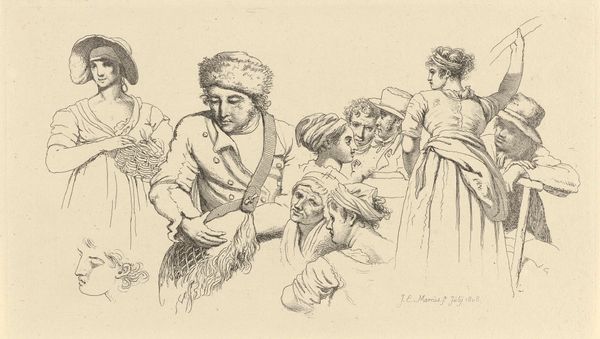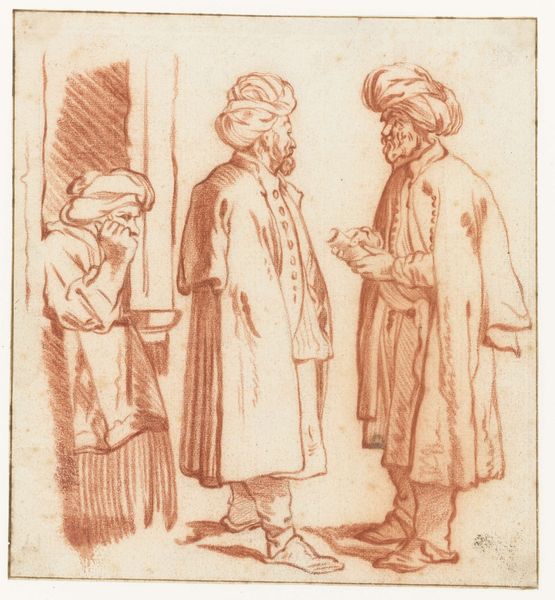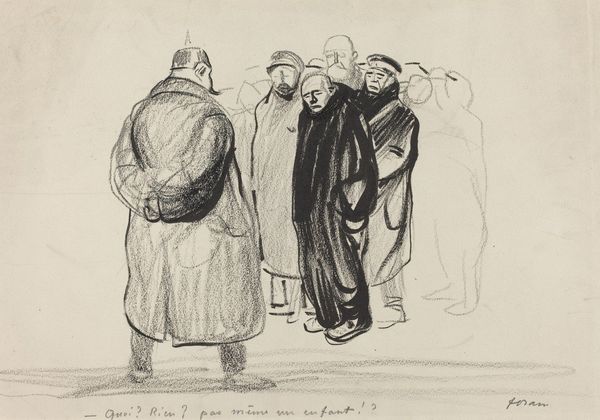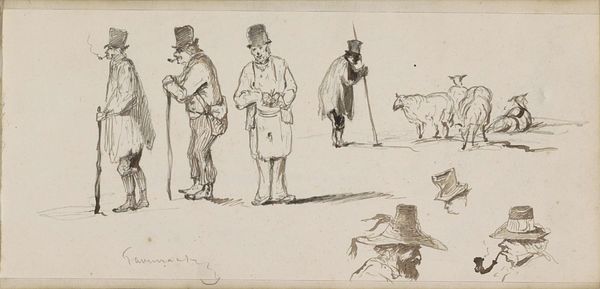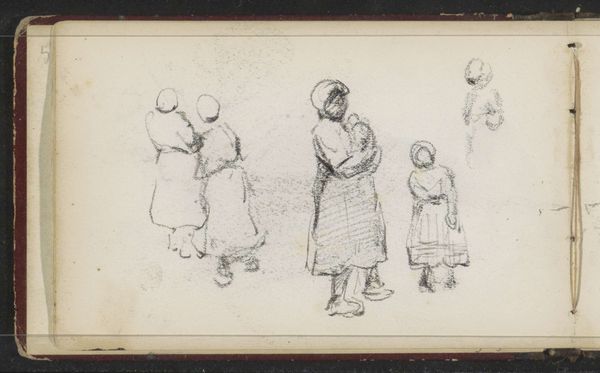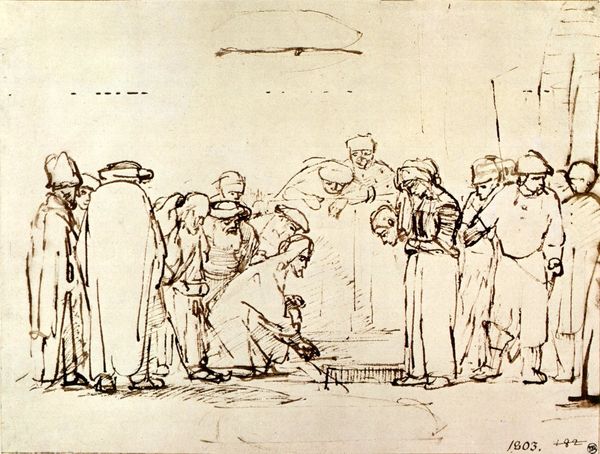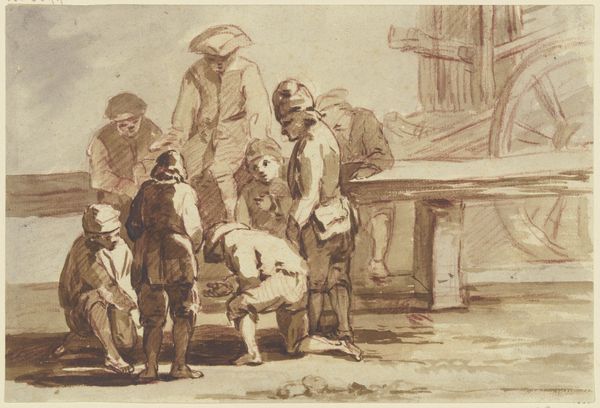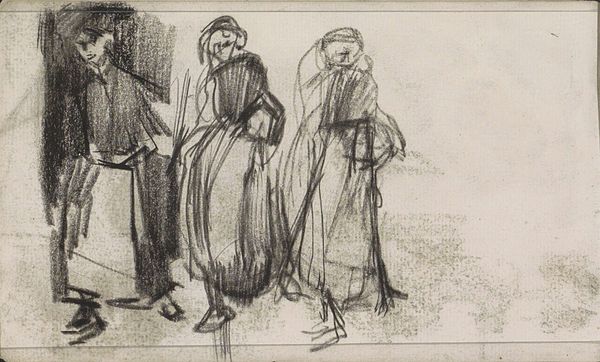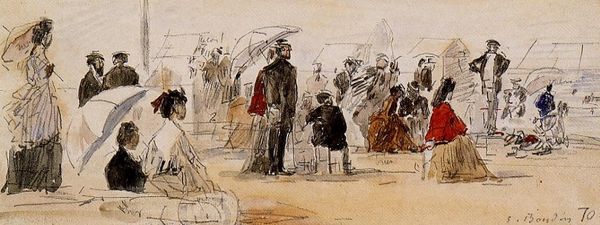
drawing, paper, ink
#
drawing
#
baroque
#
pen sketch
#
pencil sketch
#
paper
#
linework heavy
#
ink
#
ink drawing experimentation
#
pen-ink sketch
#
orientalism
#
genre-painting
Copyright: Public domain
Curator: Here we have Rembrandt van Rijn's ink drawing "Men in Oriental Dress and Two Studies of a Beggar in the Half Figure," dating back to 1645. The artist’s masterful application of line and tone are readily on display. What strikes you upon seeing it? Editor: The quickness of it! It has this energetic quality like catching a glimpse of figures bustling in a busy thoroughfare. There is a certain performative aspect of otherness going on too, something unsettling to it. Curator: Rembrandt had a particular interest in depicting people from different cultural backgrounds, and this drawing reflects the Orientalist fashion prevalent in the Baroque era. The flowing lines suggest a fascination with exotic costumes and cultural types. But the beggar also throws it off, doesn’t it? Editor: It does, he introduces a contrasting element, right? I can't help but consider the context of 17th-century Netherlands, a booming colonial power. Were these images merely ethnographic studies or reflections of an uneven power dynamic? Or just performative exoticism feeding a white gaze? Curator: That's a fair question. But notice Rembrandt’s sensitivity to the facial expressions and body language. It shows empathy towards those on the margins of society, an iconographic tradition extending from religious works to genre scenes of everyday life. He even painted his neighbors posing in exotic gear. Editor: Sure, one could view it as a sympathetic gaze. But given the societal norms of the time, I'd wager there’s an element of idealization at play, or even a subconscious bias that inevitably shapes his depictions, even in those supposedly egalitarian “genre scenes.” The very category "oriental dress" speaks to this "othering". Curator: Perhaps. Though consider also the psychological element— the symbolic meaning invested in foreign lands as spaces of fantasy, luxury, even moral questioning for Europeans, a type of projection… He certainly did draw many versions! These sartorial choices also signal the role of theatre and costume in performance in life, particularly important at this historical moment. Editor: Right, and the theatre extends beyond the canvas, impacting real lives. Cultural fascination can very easily bleed into cultural appropriation. Curator: A tension undoubtedly, captured here with extraordinary virtuosity. His style transcends mere imitation of external appearances. Editor: Well said, I’ll be pondering the dynamics of looking and seeing that play out. It leaves me asking, what does it mean to look with an ethical and informed perspective in today’s world? Curator: It makes one reflect, what traces do the weight and biases of cultural assumptions leave on works such as this one. Food for thought indeed!
Comments
No comments
Be the first to comment and join the conversation on the ultimate creative platform.


